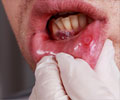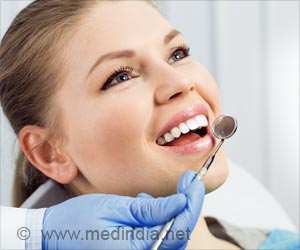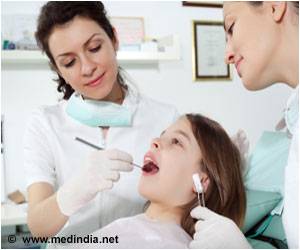Bacterial and fungal infections of the oral cavity can be effectively treated by using photodynamic therapy (PDT).
Anti-biotic resistant bacterial and fungal infections of the oral cavity can be effectively treated by using photodynamic therapy (PDT), argue researchers from the University at Buffalo's School of Dental Medicine.
Photodynamic therapy is commonly employed in cancer treatment. PDT is currently employed in the treatment of Kaposi's sarcoma, breast cancer (spread to the chest wall) and cancer of the esophagus.The treatment modality involves administration of a suitable drug (photosensitizer) followed by exposure to light of a specific wavelength, to kill the cancer cells in a specific way. Active research is being conducted to expand the potential of photodynamic therapy in the treatment of diseases other than cancer.
Following approval of the drug Photofrin® by the FDA, patients with esophageal and endobronchial cancers, peptic ulcer of the lower end of the esophagus (Barrett's esophagus) have had a new ray of hope regarding their treatment.
The researchers of the present study found that minimal doses of PDT delivered to organisms such as S. mutans (a bacteria) and fungal organisms belonging to the genus Candida (obtained from HIV/AIDS patients) resulted in enhanced killing, both in culture plates and biofilms grown on denture material.
In the present study, the FDA approved drug was added to the biofilms and the cultured samples, followed by which the treated samples were exposed to varying degrees of light (light of a specific wavelength, but of different intensities). In less than 15 minutes, PDT was found to destroy nearly 99.9% of the S. mutans bacteria. Significant killing activity could also be demonstrated against C. albicans (thrush), C. glabrata and C. krusei, derived from HIV patients.
Infections with these microorganisms are difficult to treat using conventional antibiotics. In most of the cases, it leads to the development of anti-biotic resistance. PDT, if found to be effective and safe, can overcome both these problems and pave way for the emergence of a new treatment modality. The results of this promising study were presented at the International Association of Dental Research meeting, held at Orlando, Fla.
Advertisement








